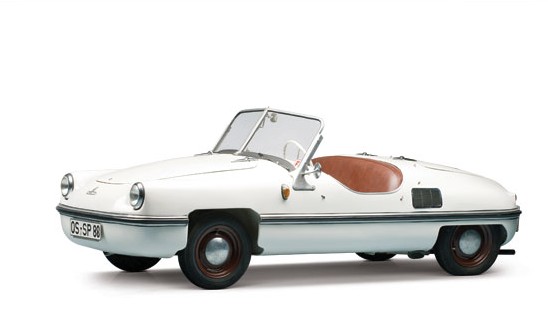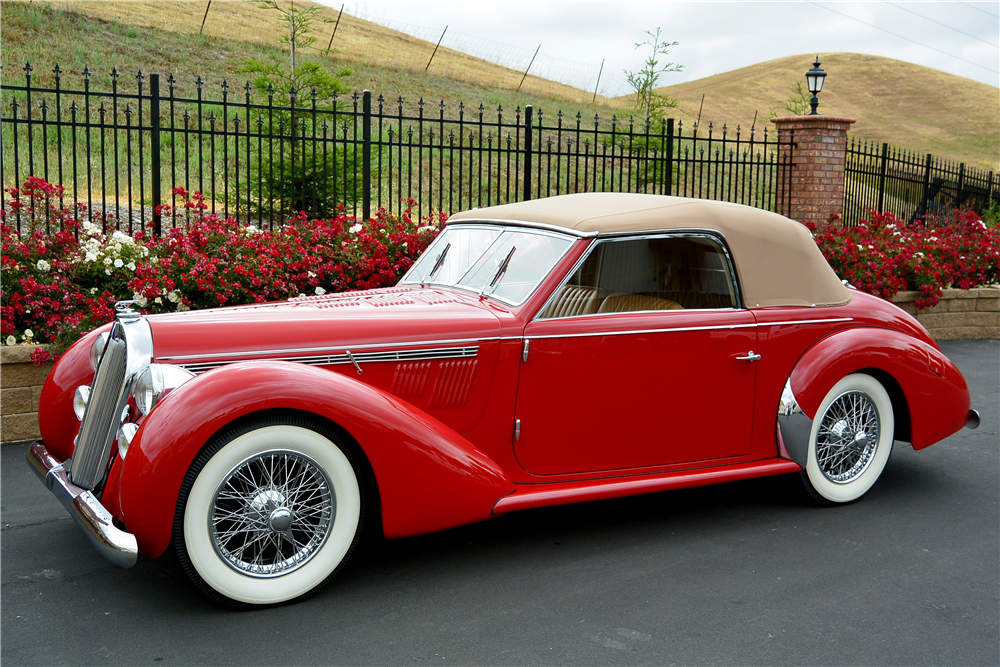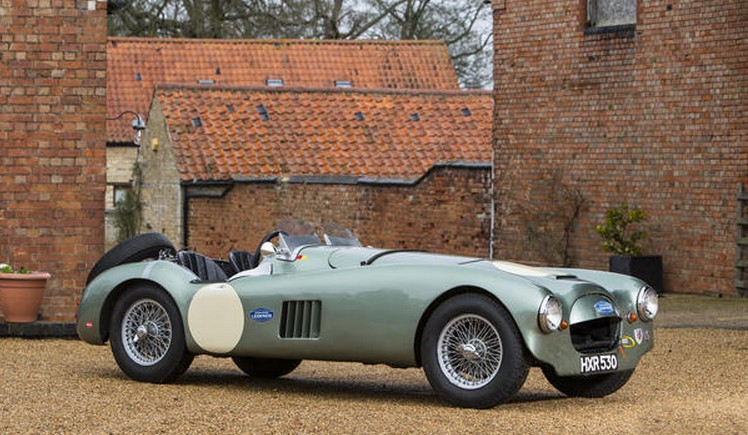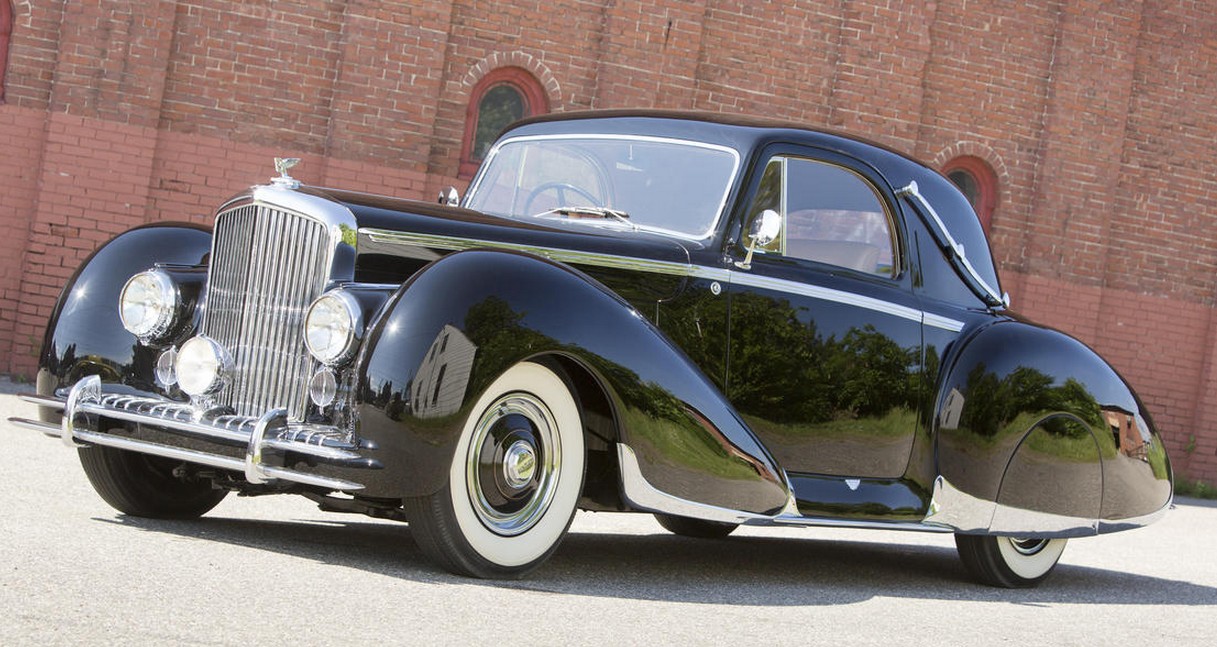The Bruce Weiner Microcar Collection
Offered by RM Auctions | Madison, Georgia | February 15-16, 2013
_____________________________________________________
1959 King S-7

This King S-7 was not manufactured by the same “King” company we talked about last week. This one was built in Sweden. The S-7 was originally built as a Fuldamobil in Germany but they were licensed all over and some licensed versions were exported. Sweden received some NWF cars but later they built there own S-7 version of the Fuldamobil and called it the Fram-King-Fulda. When that factory burned down, the assets were purchased and production restarted in 1958 or 1959 and it was called the King S-7. It was built until 1962 and 411 were made. It uses a 9.5 horsepower 191cc single-cylinder and should sell for between $35,000-$45,000. Click here for more info.
Update: Sold $47,150.
_____________________________________________________
1956 B.A.G. Spatz

Egon Brütsch built a small two-seat convertible called the 200 or “Spatz.” He allowed prospective licensees to drive it and one, Harald Friedrich, liked it but realized Brütsch’s car was essentially crap. He hired an engineer to fix the issues with it and then put it into production under the name of a new company he formed, Bayerische Autowerke GmbH – or B.A.G. It was powered by the ubiquitous 9.5 horsepower 191cc single-cylinder Sachs motor that really got around in those days. Brütsch was not amused and threatened to take Friedrich to court (he eventually took the next group of people to court, and lost because the design was significantly improved over his original and therefore not an infringement) and Friedrich left the company – but not before 859 could be built and sold. This one should sell for between $30,000-$40,000. Click here for more info.
Update: Sold $32,200.
_____________________________________________________
1957 Voisin Biscooter C31

Gabriel Voisin’s post-war fortunes were not quite as bright as those leading up to war. He designed the tiny Biscooter but, because he no longer controlled his own company, could not get it into production. In fact, no one wanted it – even though he racked up close to 1,000 orders for it. He sold the rights to the Spanish and moved on – sort of. At some point, he went back and designed another Biscooter, an enhanced version – the C31. Some things were different, but it was largely the same. The Spanish were not interested in this model (the one you see here). It uses a 197cc single-cylinder engine making nine horsepower. Still, 16 were built and this one should bring $60,000-$80,000. Click here for more info.
Update: Sold $80,500.
_____________________________________________________
1961 Taylor-Dunn Model R Trident

If you weren’t aware, California was a weird place in the 1960s. Still is, really. But this was their idea of a car. Originally introduced as a glorified grocery kart in 1955, the three-wheeled electric runabout was called the Taylor-Dunn PG. In 1959, the Trident was introduced. It still used a one horsepower electric motor – but it also had road-going capability. In today’s world of SUVs, you would need a death-wish to drive this down the street in suburban L.A. But 1961 was a different time – and you could always just hop up onto the sidewalk to get away from traffic – no one would be able to tell where you belonged anyway. This should sell for between $15,000-$20,000. Click here for more info.
Update: Sold $29,900.
_____________________________________________________
1947 Rovin D2

Hard work pays off – the brothers Rovin showed their first cyclecar in 1927 and when France was occupied during the war, the continued to work and design on a new car, knowing that the war and its restrictions would eventually end. They had a prototype done in 1945 and were ready to go once France began to get back on its feet. The production version was called the D2 and it uses a 10 horsepower 425cc two-cylinder engine. Their products were quality and they were able to stick around for a while – until about 1959, producing different models. The D2 was short-lived and only 200 were made. This one should bring between $30,000-$40,000. Click here for more info.
Update: Sold $43,700
_____________________________________________________
1953 Manocar Prototype

This rough-looking tiny car was one of two prototypes built by Établissements Manom in Saint Ouen, France between 1952 and 1953. It uses a four horsepower 125cc single-cylinder and was supposed to set the microcar world on fire due to its ease of access and “roomy” interior. Needless to say, this was as far as the project got. It’s all-original and should sell for between $5,000-$10,000. Click here for more info.
Update: Sold $6,900.
_____________________________________________________
1963 Goggomobil TL-250 Transporter

We’ve already featured the even-rarer pickup variant of the Goggomobil Transporter. This is the van version. It’s also a TL-250 model, which means it uses the smaller 245cc two-cylinder engine making 14 horsepower. These vans actually had a useful load-carrying capacity for their size and the German postal service used them – in fact, they were more or less responsible for their production, buying up about 2/3 of all vans built. This one (of 3,665 built) has been painted up in Double Bubble Gum colors. All of the Goggomobil Transporters in this sale have some “cute” paint scheme. The price isn’t as cute: $80,000-$100,000. click here for more info.
Update: Sold $132,250.
_____________________________________________________
1953 Bond Minicar Mk C

Only the Mark F version of the Bond Minicar outsold the Mark C – and it was by less than 100 units. In total, 6,399 Mark Cs were built between 1952 and 1956. The Mark C was a marked improvement in design and quality over the earlier Mark Bs – it looked more like a car from the front – and less like a rolling coffin. The style really fit in with the times. It used a 197cc single-cylinder making nine horsepower. There were various trim levels available – which also helped make this seem more like a real car. This one should bring between $10,000-$15,000. Click here for more info.
Update: Sold $13,800.
_____________________________________________________
1958 Solyto

New-Map, the motorcycle manufacturer (who also built a few cars called the “Baby”), shifted focus to small three-wheeled commercial delivery vehicles in the late-1950s. They were sold under the “Solyto” name. What separated them from their competitors is the two-seat closed cab design that gives it a more car-like appearance than the obviously-scooter-based Vespa delivery trucks and the like. This one uses a 125cc single-cylinder making 4.5 horsepower. These were also sold under license in Spain as the Delfín. This one should sell for between $15,000-$20,000. Click here for more info.
Update: Sold $25,300.
_____________________________________________________
1962 Motobécane KM 2U

Another mini commercial vehicle to round out our second-to-last edition of Microcar Mondays. This has everything a big truck would have – except smaller – even a spare tire underneath. Motobécane was a major motorcycle and bicycle manufacturer in France from 1923 until 1981. In 1962, they introduced a small car prototype called the KM 2 that never made it to production. There was also a utility version produced (KM 2U) – a lone prototype example. It is believed that this is that truck. It uses a 125cc single-cylinder engine making six horsepower. This unrestored mini-truck should sell for between $5,000-$10,000. Click here for more info. And click here to check out more microcars.
Update: Sold $16,100.


















